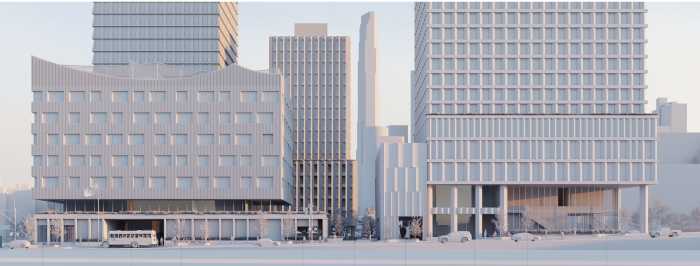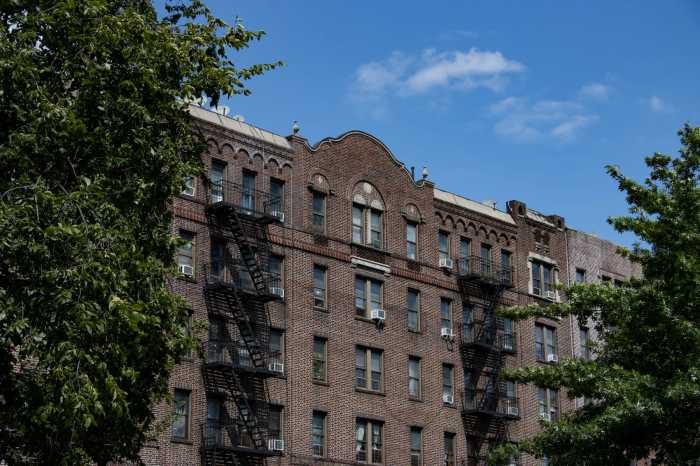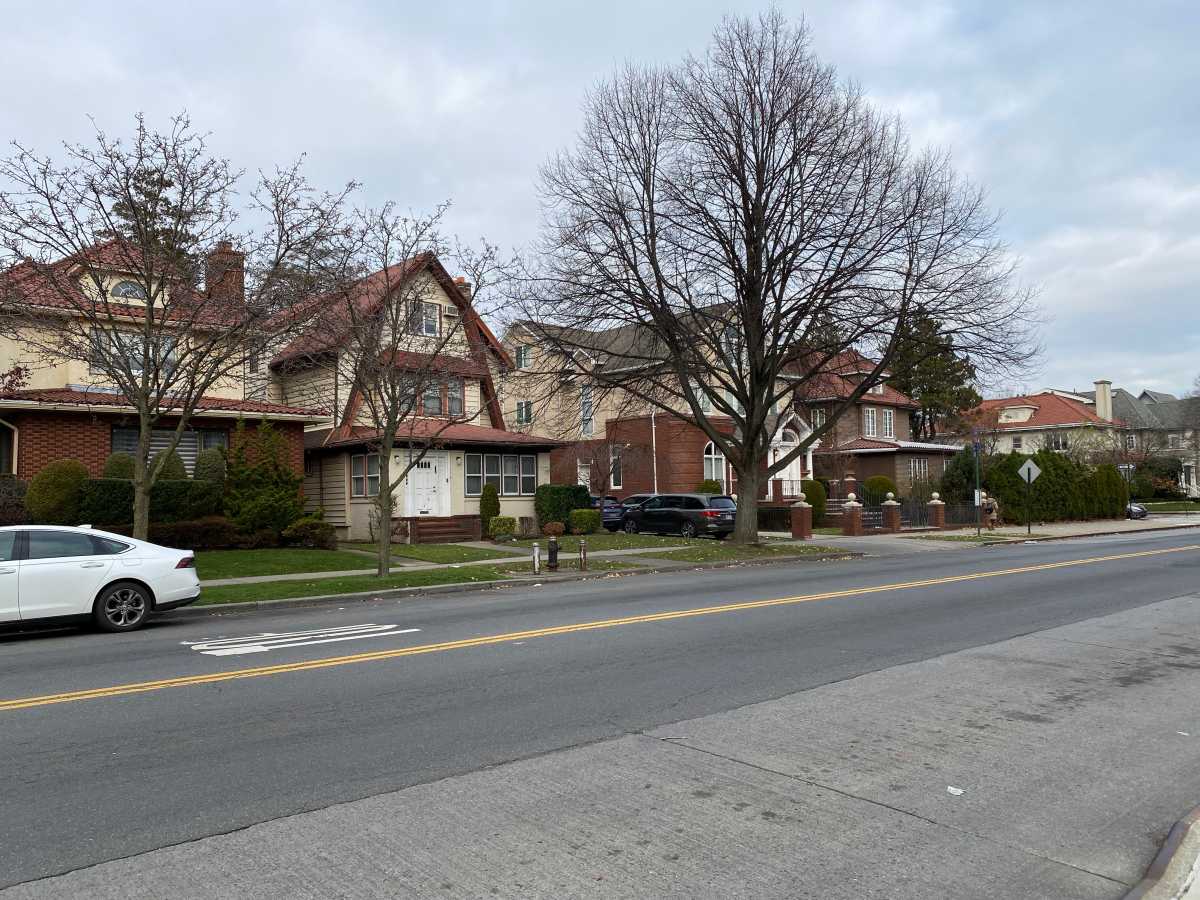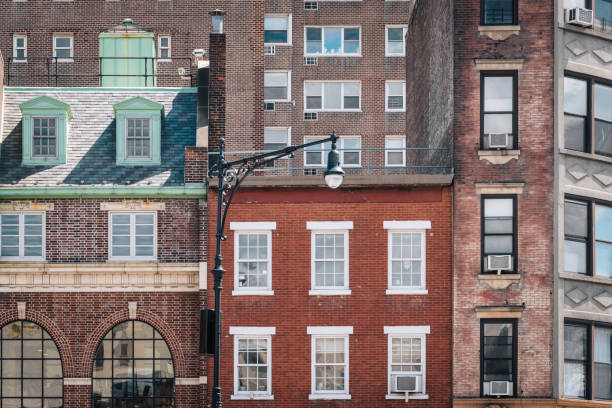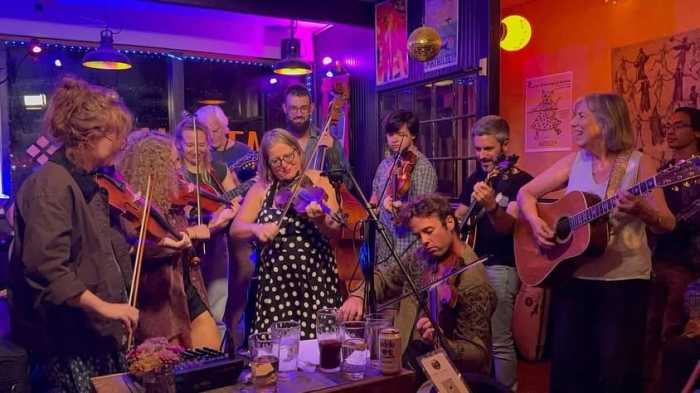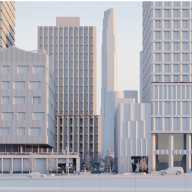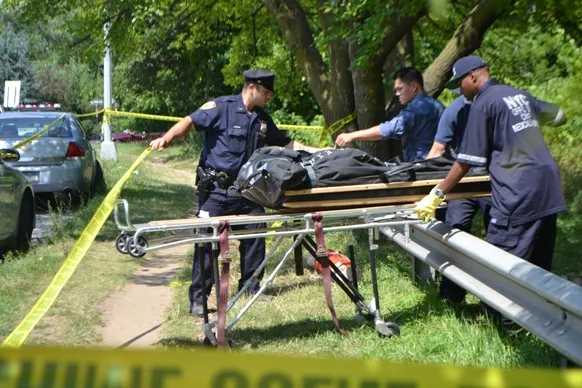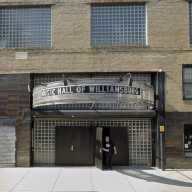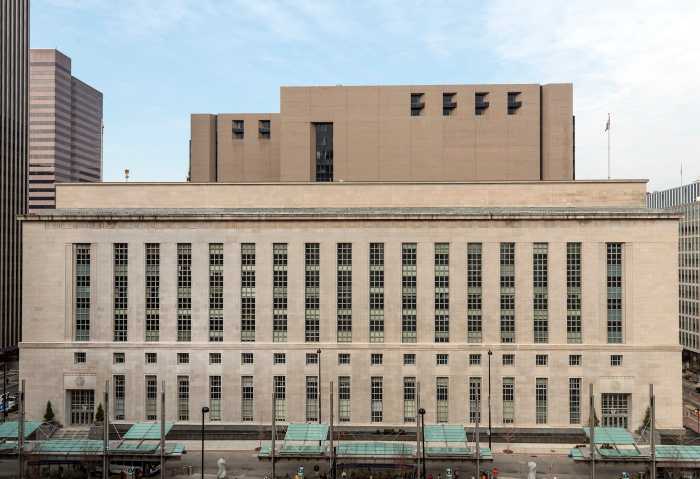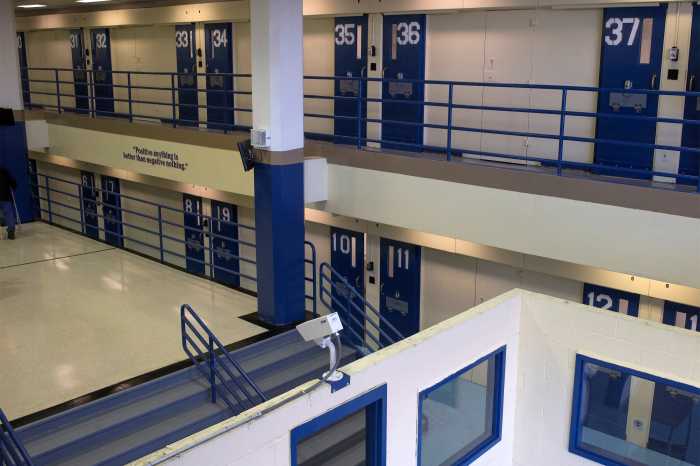For the past two months, community board leaders, Borough Hall staffers
and members of select organizations have been attending closed-door meetings
with developer Bruce Ratner to negotiate a contract that would guarantee
certain benefits to the communities surrounding his Atlantic Yards site.
The so-called community benefits agreement, or CBA — which is said
by both Forest City Ratner and sources involved in the negotiations to
be swiftly approaching a final form — would include a labor agreement
negotiated with unions to guarantee that a quarter of the construction
jobs generated by the project go to local residents.
But judging by reactions to news of the agreement this week, community
members, both those in favor of and those against the Atlantic Yards plan
— which includes a basketball arena, 4,500 units of housing and three
office skyscrapers — don’t feel either represented or included.
Ideas of having a CBA have been whispered since Ratner announced his plan
late last year. The term community benefits agreement came from an initiative
to hire locally for the development of the Staples Center basketball arena
in downtown Los Angeles, and this would be the first of its kind on the
East Coast.
Forest City Ratner’s version promises that 50 percent of the rental
and condominium apartments will be “affordable housing” for
various incomes, that there will be a minimum hiring quota of minority
and women for available jobs, that seven acres of the project will be
devoted to open space for a mix of recreational uses, and the icing on
the cake: a project labor agreement that labor unions have reportedly
signed on to, allowing 25 percent of the hires to come from the neighborhood
by providing temporary union status to employees of local contractors.
Until this week, Ratner’s commitment was still unknown to the larger
community. But the group, which has been meeting every Tuesday for the
past eight weeks, has recently stepped up efforts to hurry the CBA along
and is targeting a Nov. 1 completion date, according to sources.
The players
Borough President Marty Markowitz has been overseeing the discourse, a
Markowitz spokesman confirmed, and the three community boards that will
be affected by the project — CB2, CB6 and CB8 — have been represented
by their district managers and chairpersons. Three other organizations
were hand-selected by Ratner last March and April to represent the community.
Sharing seats at the table are the ACORN Housing Corporation, a local
chapter of a nationwide advocacy group; Brooklyn United for Innovative
Local Development (BUILD), a Prospect Heights-based community group; and
the Downtown Brooklyn Oversight and Advisory Committee (DBOC), which has
played a longstanding role in negotiating hires for minorities and women.
Tensions boiled over when the invitation from Forest City Ratner to the
DBLC, a dynamic and sizable group of local clergy and politicians, never
seemed to materialize.
At a Town Hall meeting organized by DBLC Thursday night at the Hanson
Place Central United Methodist Church in Fort Greene, DBLC members presented
Forest City Ratner Executive Vice President Jim Stuckey a draft of their
own CBA, with a demand for a seat at the table. A boycott of Ratner’s
new Atlantic Terminal shopping center was threatened if they were denied.
“We’re no longer going to sit around and let people come into
the community and assume that people will sit back and be silent,”
said the Rev. Anthony Trufant. “That day has come, and that day is
gone. It is a new day.”
When Stuckey’s turn came to speak he wasted no time.
“You were invited to the wedding, the seat’s been open for eight
weeks. Please come to the reception,” was Stuckey’s response,
to which several of the reverends rose and shook his hand, but others
remained seated and fumed.
Silence from community boards
Word that community board leaders have been meeting with the developer,
coming just two weeks after the boards publicly demanded that Ratner’s
project be subject to the city’s land use review process rather than
the less stringent state review, had some community members scratching
their heads in disbelief.
“What I find surprising is that the community boards are in meetings
that they haven’t made public,” said Daniel Goldstein, a leader
of the anti-Atlantic Yards group Develop-Don’t Destroy Brooklyn.
Goldstein was surprised to hear about the meetings. “It’s an
illegitimate negotiation,” he said, noting the board chairs were
attending the meetings on behalf of a constituency ignorant to the plans.
Community Boards 2, 6 and 8 all drafted resolutions urging Mayor Michael
Bloomberg and Gov. George Pataki to put the plan through city oversight,
yet one of the foregone conclusions of participants in the CBA meetings
is that the land disposition and review will take place on the state level.
“Was their resolution for show?” Goldstein asked rhetorically.
“What does it mean if they’re behind the scenes accepting and
negotiating a private agreement?”
The leaders of the community boards, however, did not feel the one act
was contradictory to the other.
“Ongoing negotiations are not something that is typically done in
the public forum,” said Craig Hammerman, district manager of Community
Board 6, who said he’d been attending meetings with board chairman
Jerry Armer.
Hammerman said they were invited to participate “mostly in observation”
and that it would have been irresponsible not to attend. Asked why their
fellow community board members were not apprised of their attendance at
the meetings, Hammerman said announcing their participation at community
meetings wasn’t necessary.
“You’re a guest at a party; it’s generally not your role
to invite other guests,” Hammerman said.
Anti-arena plan activist Patti Hagan, of the Prospect Heights Action Coalition,
was livid at hearing the news.
“ That the communities and the community groups have been excluded
— it’s a miscarriage of democracy!” she said. “How
can [Ratner] call it a community meeting?”
Hagan said she wasn’t sure if her group would take action, but didn’t
think it was fair for the community boards’ leaders to both advocate
a ULURP in public and privately negotiate for a state-level process.
“I thought you only made one such agreement with the community,”
she said, adding, “I think its weird.”
Robert Perris, district manager of Community Board 2, echoed Hammerman’s
sentiment, and confirmed that he and board chairwoman Shirley McRae were
“sitting in on discussions about a CBA primarily in an advisory capacity.”
Perris said that the whole district’s understanding would be more
important once the deal was formalized, at which time it will review the
agreement and “address public facilities,” the review of which
is mandated by the City Charter.
Community Board 8 confirmed that they had been involved in the negotiations,
but said their board members were made aware of the fact.
Stuckey said there was no clause of confidentiality imposed on attendees
of the meetings, but ventured that the community board chairs or district
managers, “may have felt uneasy about bringing it to work with as
a board,” and were afraid messages would be mixed up as “details
are still being hammered out.”
Even an insider to the negotiations, the DBOC’s Bill Howell, reacted
with surprise when he read about the boards’ ULURP resolutions.
“I wasn’t aware that the community boards had voted to try and
do the ULURP process,” said Howell. “But then, our sole purpose
is the discussion of a community benefits agreement.”


